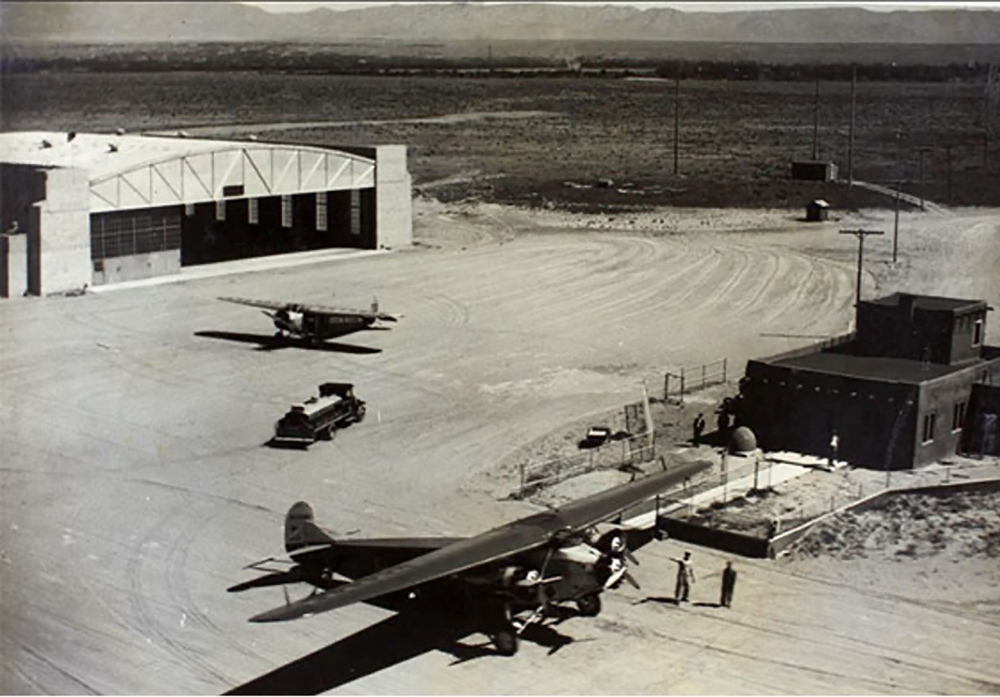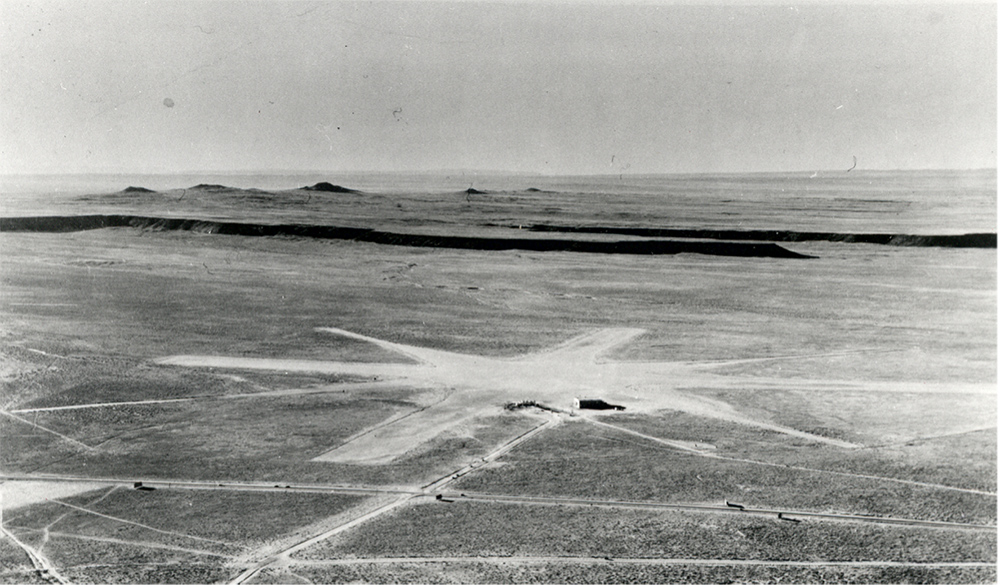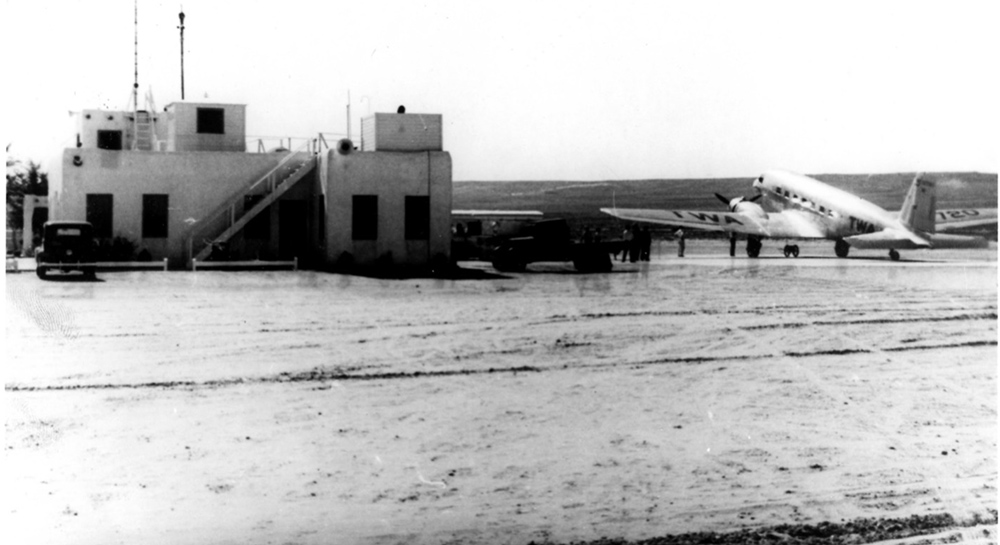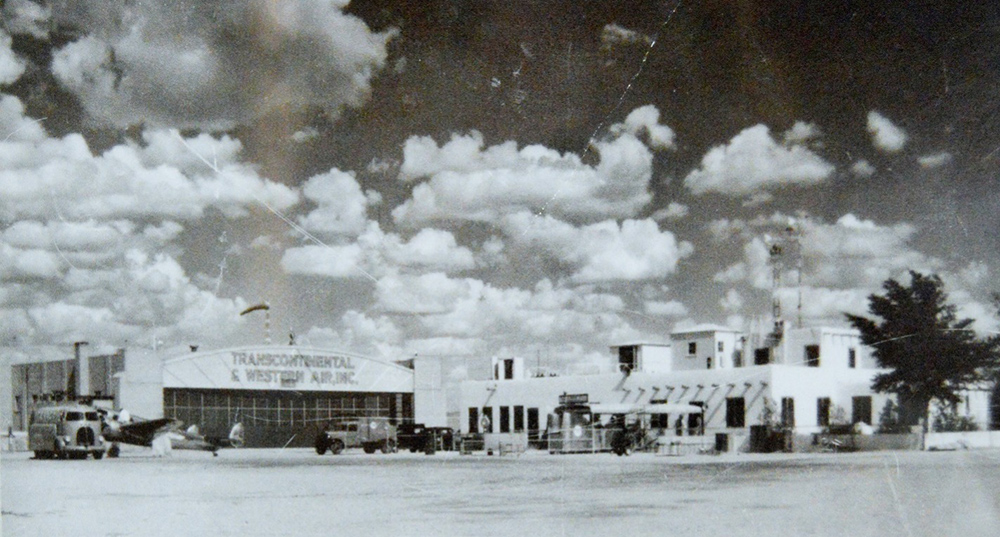Albuquerque Airport
West Mesa Airport/
WAE, TWA Airport 1929-1939
The West Mesa Airport was constructed by Western Air Express (WAE) in late 1929 and was the second airfield to serve Albuquerque. It was located in an area on the west side of Albuquerque which is now bound by Central Ave, Coors Blvd., Interstate 40, and Unser Blvd. Airport Drive, which spurs north off Central Avenue and still exists today, was the access to the airport. WAE was the first airline to serve the city and felt that the proximity of the original Albuquerque Airport on the east side, also known as Oxnard Field, was too close to the Sandia Mountains therefore building their own airport. The West Mesa Airport was also referred to as the WAE Airport. About the time of the move to the new airport in the fall of 1929, WAE created an offshoot airline called Mid-Continent Air Express which served a north-south route from Denver to El Paso that included stops at Albuquerque, Santa Fe and Las Vegas, New Mexico. This made Albuquerque a crossroads for air travel in the southwest. On July 24, 1930, the Los Angeles to Kansas City route of WAE (the route that served Albuquerque) was merged with Transcontinental Air Transport (TAT), a competing carrier flying nearly the same route. The merger was necessary to obtain a new U.S. Mail contract that both carriers needed as the Great Depression was unfolding. TAT, which was still operating at the original Albuquerque Airport, then moved to the West Mesa Airport and the newly merged carrier became known as Transcontinental and Western Air, or TWA. In 1931 Mid-Continent Air Express was merged with another route of WAE from Cheyenne, Wyoming to Pueblo, Colorado making a stop in Denver. WAE’s new north-south route was extended south through Albuquerque and onto El Paso, Texas which continued operating for the next two to three years. On July 15, 1934, Varney Speed Lines began serving the north-south route in place of WAE. Varney’s name was changed to Continental Air Lines in mid-1937. The West Mesa airport terminal building was expanded at one point and a canopy was added that extended on rails to the aircraft like what was used at the TAT terminal at the original Albuquerque Airport. The two carriers, TWA and Continental, continued to serve the West Mesa Airport (also referred to as the TWA Airport at this time) until mid-1939 when torrential summer monsoon rains flooded the facility and its dirt runways. A new airfield, The Albuquerque Municipal Airport with paved runways and located back on the cities’ east side, was nearing completion at the time and the decision was made to move all airline operations over to the new airport while work was being finished.
The West Mesa Airport went on to operate as a general aviation facility run by Cutter-Carr Flying Service until it was closed in 1967. Most of the airport was demolished for new development in the 1970’s however a small plot of land remained where the terminal and tarmac were located which still had remnants of the facility including floor tiles from the terminal and the rails in the tarmac where the extendable canopy would operate. This plot of land escaped new development until 2021 when a storage facility was constructed on it.




